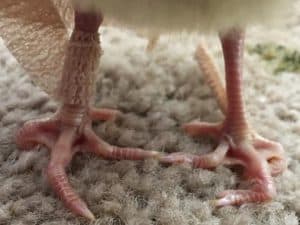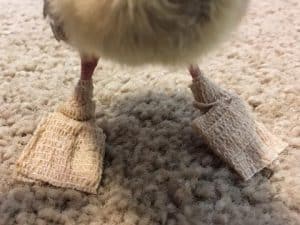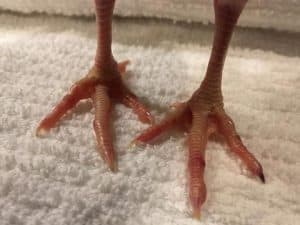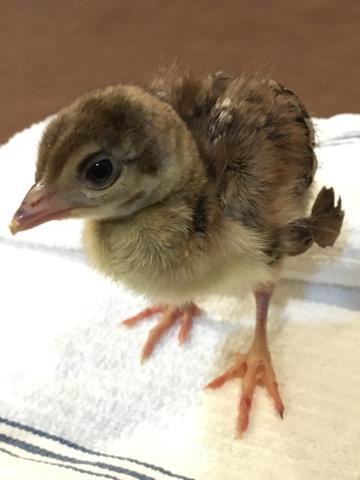Crooked toes on chicks can range from mildly cosmetic to debilitating. Fortunately, despite how significant it may seem, it is a relatively quick and easy fix if corrected promptly. Young, just hatched birds have high success rates in as little as 24 hours. We recently had to fix a severe case in a just hatched peafowl, which prompted this post. Finding the cause of crooked toes is important to hopefully prevent such problems in the future.
Causes of crooked toes include:
- Incorrect incubation temperatures
- Mishandling of eggs
- Improper egg storage
- Storing for too long
- Incorrect temperature or humidity
- Breeding stock
- Heredity/genetic factors
- Poor health or nutrition
- Aged or diseased
- Post hatching problems
- Excessive activity after hatch
- Smooth brooder floor
- Nutritional deficiency
- Genetics
- Injury
How to correct crooked toes:
It is best to initiate treatment as soon as possible. Birds should be offered a vitamin supplement along with splinting. If the deformity is caused by a vitamin deficiency, this will help correct the problem from within. Poultry Nutri Drench and Durvet Vitamins & Electrolytes are excellent choices.
If toes are splinted within 24-48 hours of hatching, there is increased success rates in the shortest amount of time. In the case of our peafowl chick, we splinted when it was about 24 hours old and left the splints on for about 36 hours.
The ultimate goal is to secure the toes in the correct position, so that the bones will harden and leave them straight. When splinting, ensure that splint is not to tight and reducing blood flow, and splints are not so slippery as to cause spraddle leg.
Toes can be splinted with toothpicks or coffee stirrers, or taped into place on a piece of cardboard cut to the birds foot size. If taping, use medical tape, bandaids or vet wrap if possible. Other tape is too sticky and could cause injury when removing.
Here is our peachick before we began. This is the worst case we’ve seen. We just started to place vet wrap before stopping to take a picture.

We used toothpicks to splint. They were cut to size and wrapped in vet wrap to eliminate sharp edges that could cause additional injury. We splinted each individual toe, and then wrapped vet wrap over the entire foot to prevent the splints from falling off and keep toes straight (some wanted to stick out to the side after splinting).

After 36 hours, we removed the splints. Amazingly, each toe was perfectly straight. If leaving on bandages much longer than a day, they should be rewrapped to remove dirty bandages and ensure no damage is being done from the splints. Here are the chicks toes after splinting:


Sources:
Damerow, G. Hatching & Brooding Your Own Chicks. Retrieved August 22, 2016, from https://books.google.com/books?id=gvq9maYXTw8C

Lucia Moore
Sunday 9th of April 2023
Can this problem be fixed I have a hen that's about 6 years old I have tried several things to fix her toes but I haven't been able to find something to make it right I am sure that she's in pain and not happy with her having trouble with trying to walk is there anything I can do to help her ???
LoGo
Saturday 24th of February 2024
@Lucia Moore, Probably needed to catch it early in while her feet were still growing and bones were soft. Could make sure she’s getting enough nutrients, but again that’s important when they’re young as well. Is your hen still living? She’s going strong if so. 💜💕🐥🐓